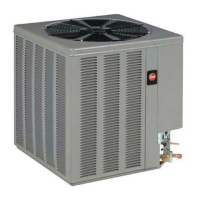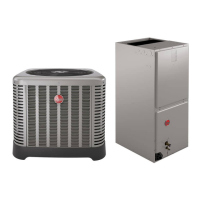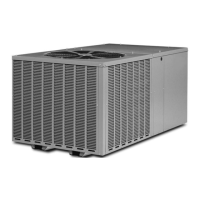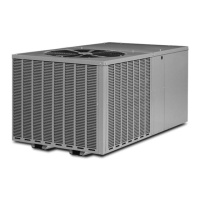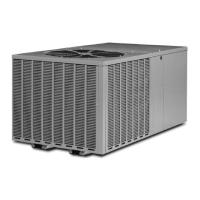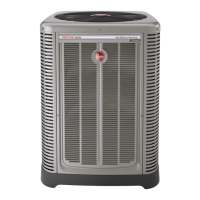12
• If tubing is to be run underground, it must be run in a sealed watertight chase.
• Use care in routing tubing and do not kink or twist. Use a tubing bender on the
vapor line to prevent kinking.
• Route the tubing using temporary hangers, then straighten the tubing and
install permanent hangers. Line must be adequately supported.
• The vapor line must be insulated to prevent dripping (sweating) and prevent
performance losses. Armaflex and Rubatex are satisfactory insulations for this
purpose. Use 1/2” [12.7 mm] minimum insulation thickness, additional insula-
tion may be required for long runs.
• Check Table 2 for the correct vapor line size. Check Table 3 for the correct liq-
uid line size.
7.5 TUBING CONNECTIONS
Indoor coils have only a holding charge of dry nitrogen. Keep all tube ends sealed
until connections are to be made.
• Use type “L” copper refrigeration tubing. Braze the connections with accepted
industry practices.
• Be certain both refrigerant shutoff valves at the outdoor unit are closed.
• Clean the inside of the fittings before brazing.
• Remove the cap and schrader core from service port to protect seals from heat
damage.
• Use an appropriate heatsink material around the copper stub and the service
valves before applying heat.
• IMPORTANT: Do not braze any fitting with the TEV sensing bulb attached.
• Braze the tubing between the outdoor unit and indoor coil. Flow dry nitrogen
into a service port and through the tubing while brazing.
• The service valves are not backseating valves. To open the valves, remove the
valve cap with an adjustable wrench. Insert a 3/16” [4.7 mm] or 5/16” [7.9 mm] hex
wrench into the stem. Back out counterclockwise.
• Replace the valve cap finger tight then tighten an additional 1/2 hex flat for a
metal-to-metal seal.
7.6 LEAK TESTING
• Pressurize line set and coil through service fittings with dry nitrogen to 150
PSIG [1034.2 kPa] maximum. Leak test all joints using liquid detergent. If a
leak is found, relieve pressure and repair.
